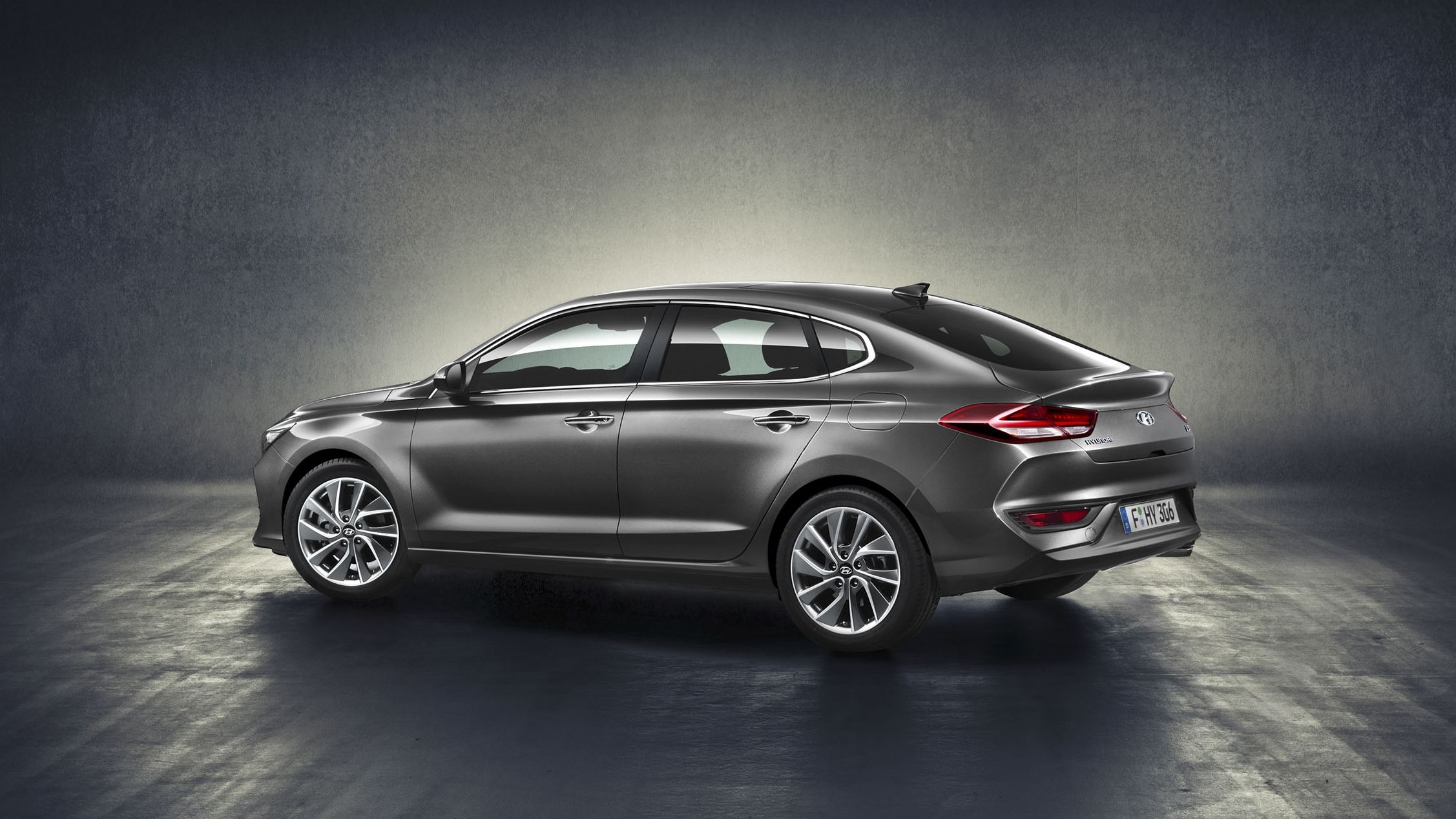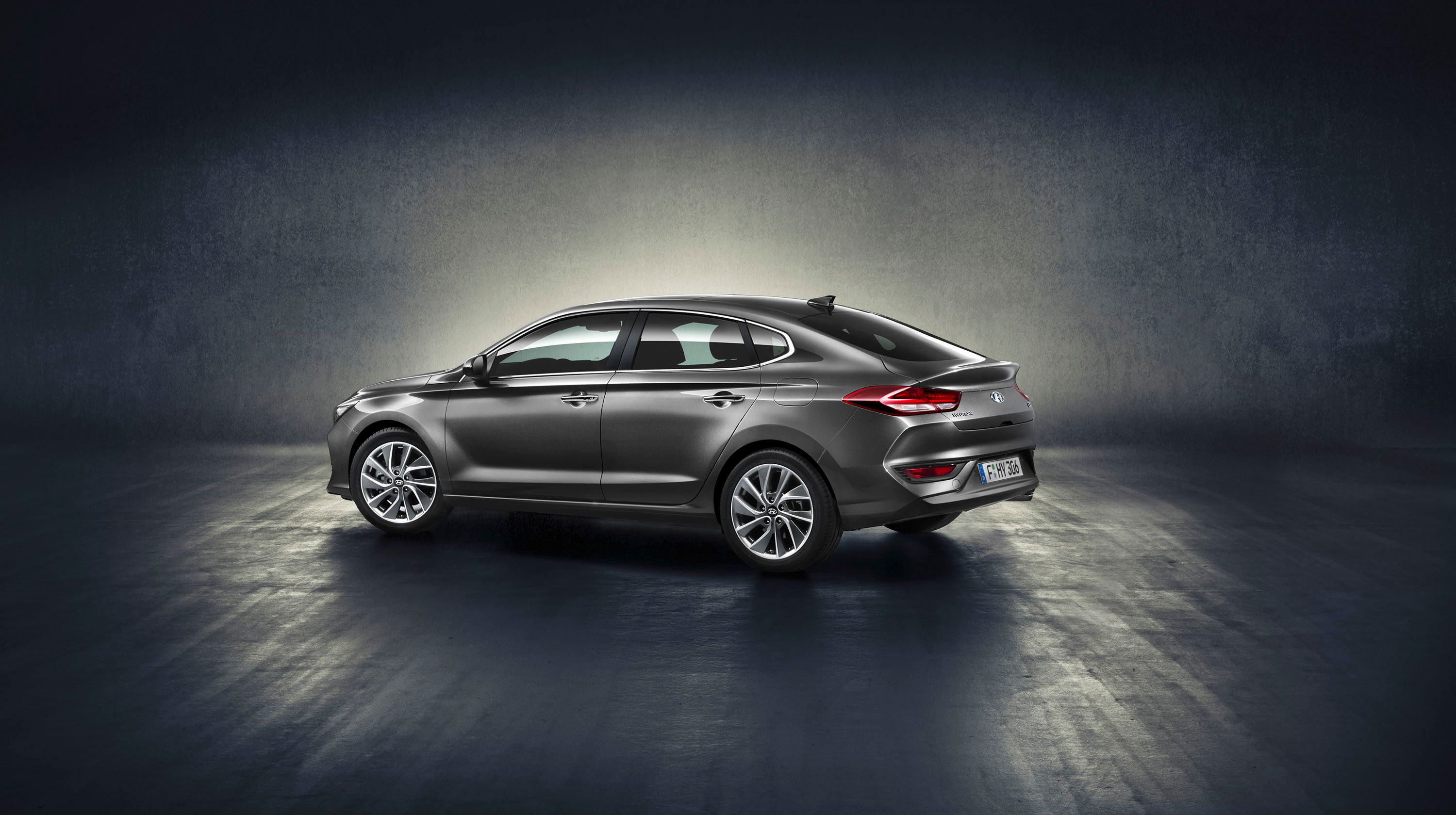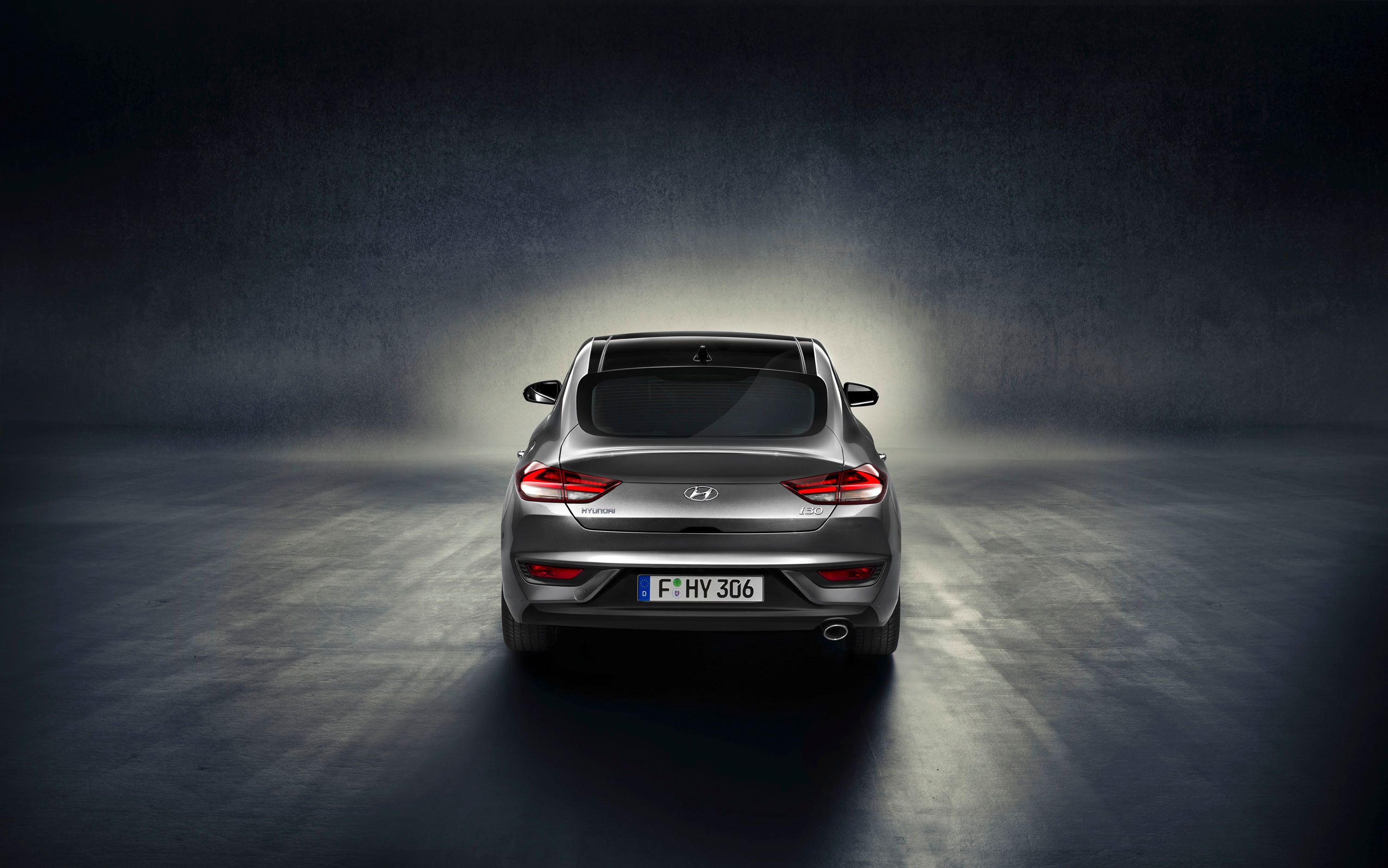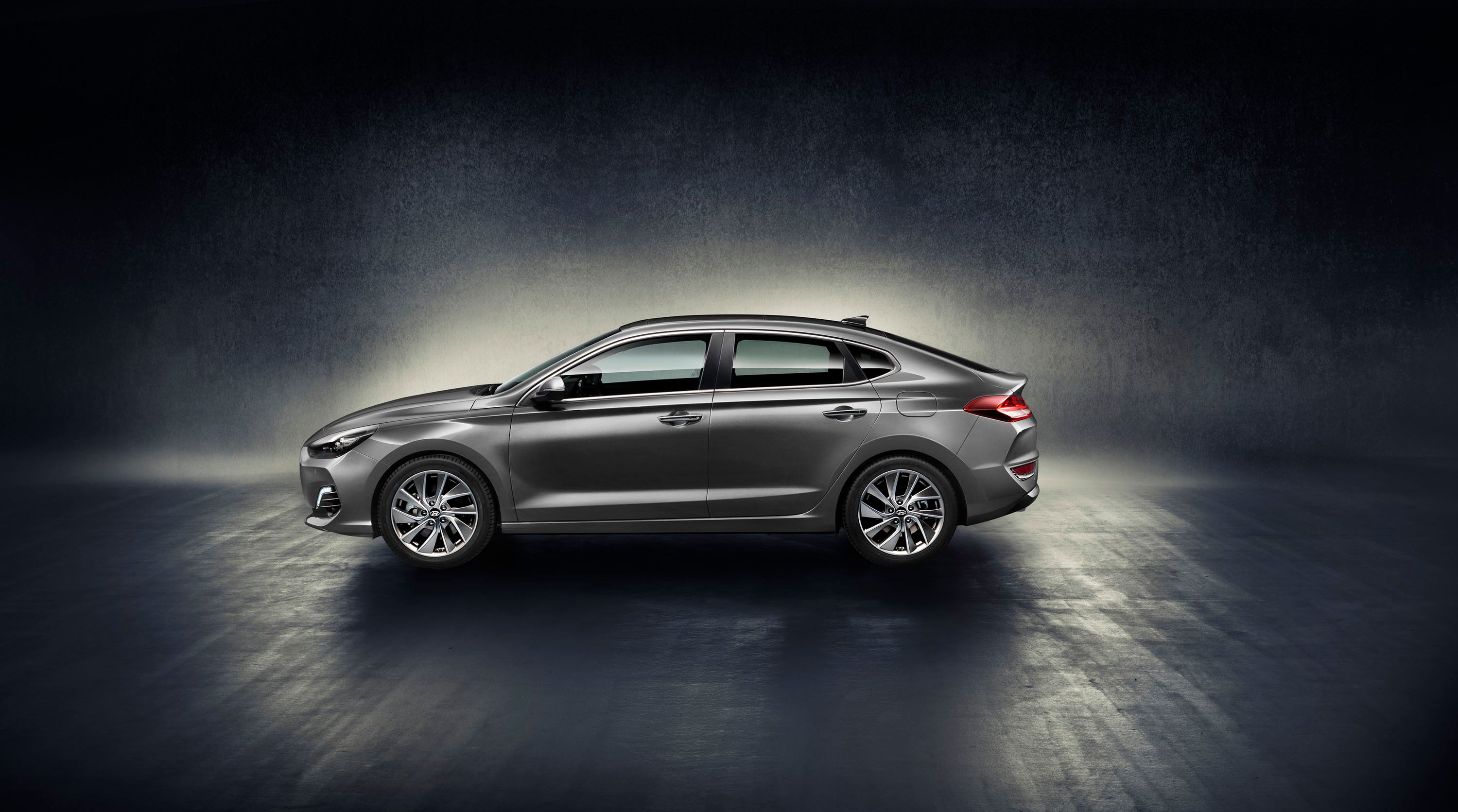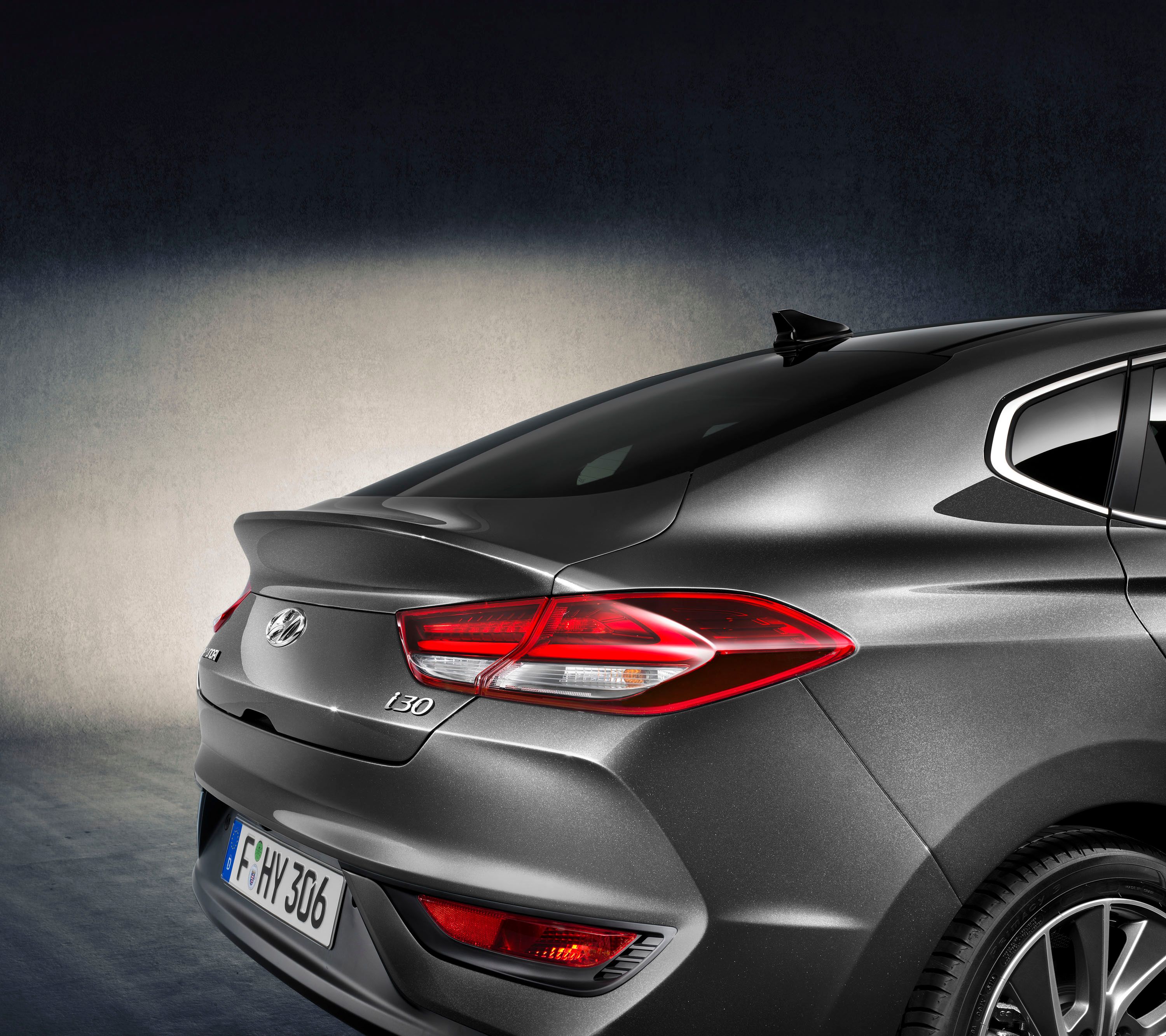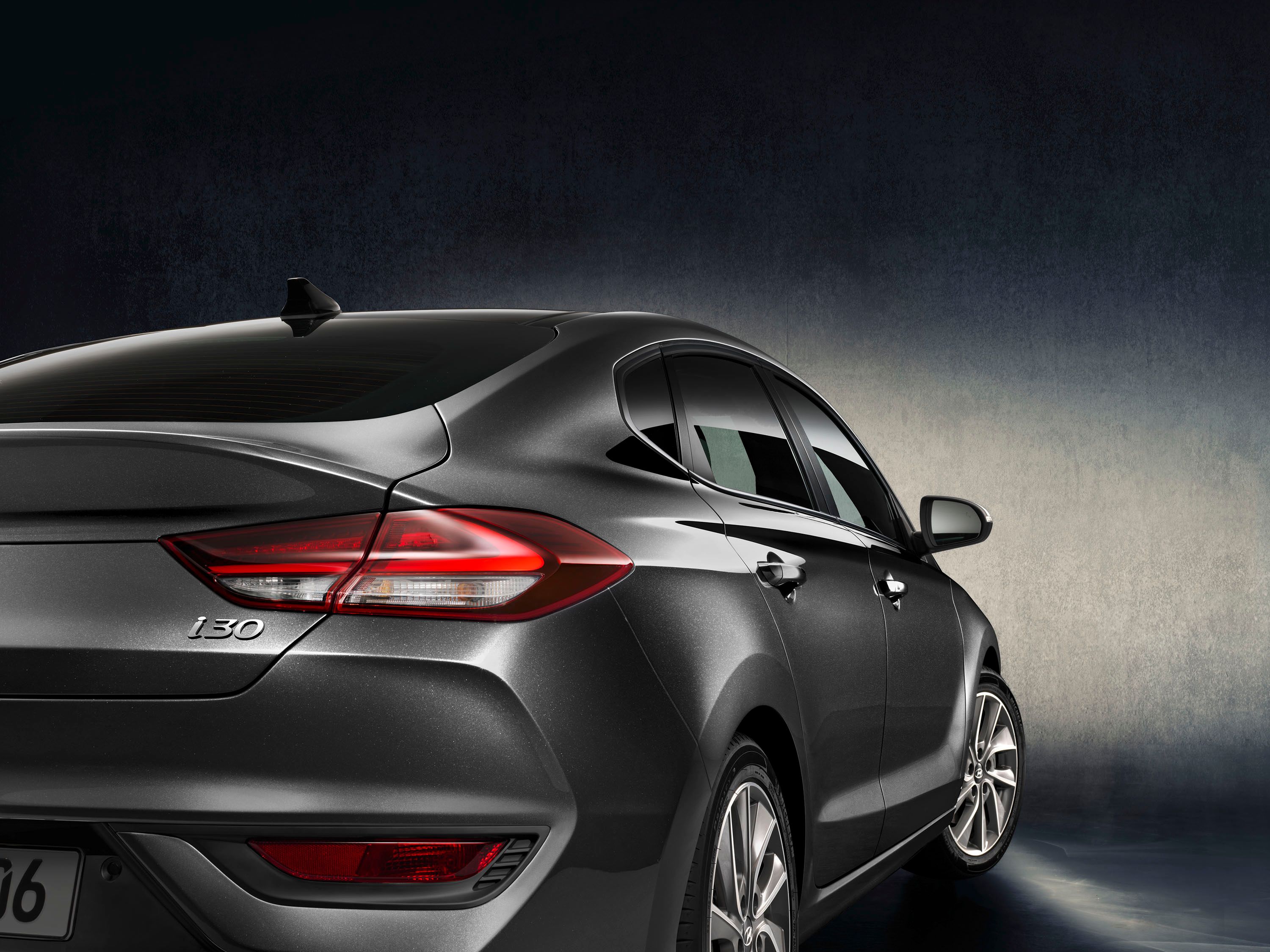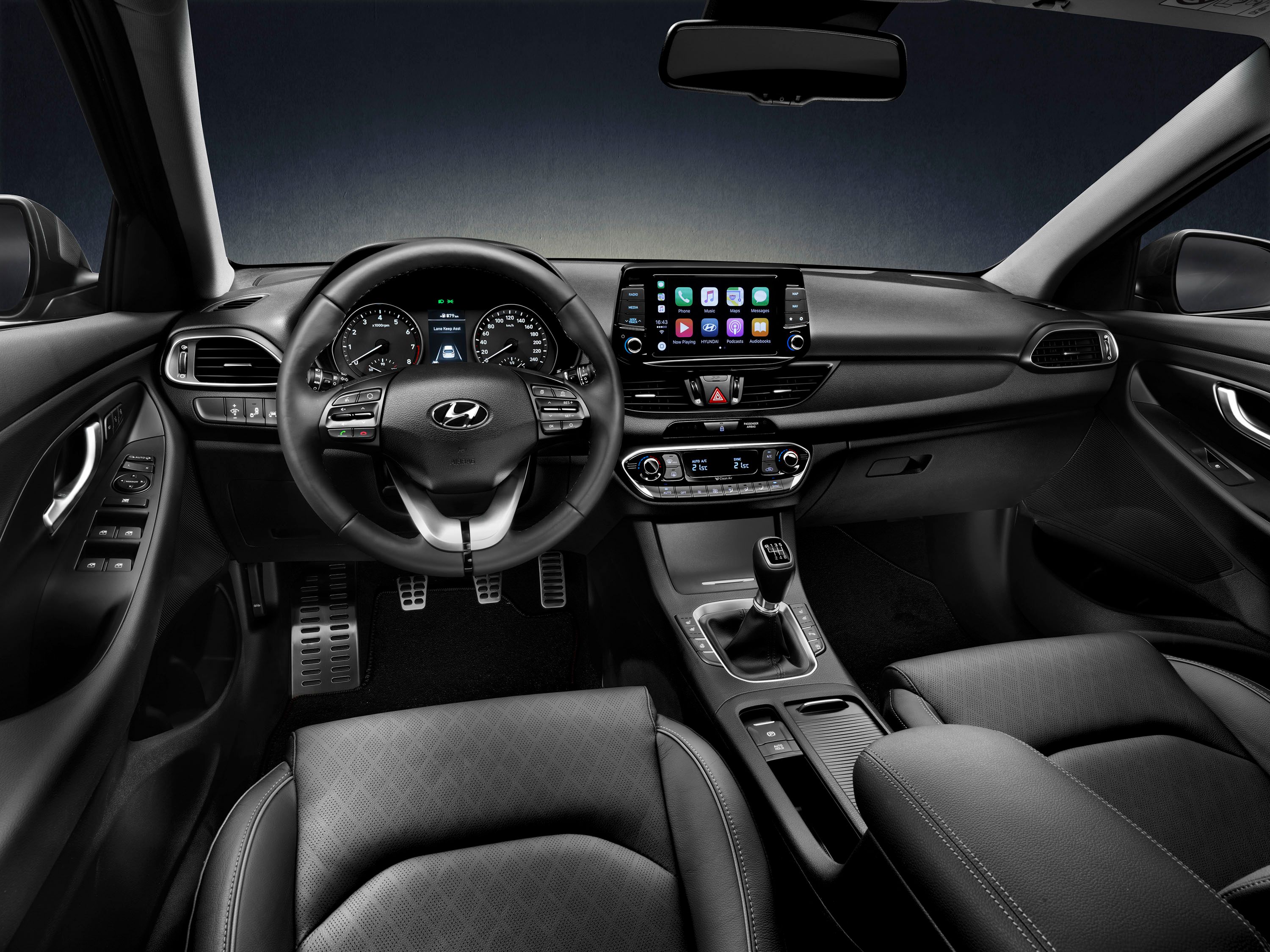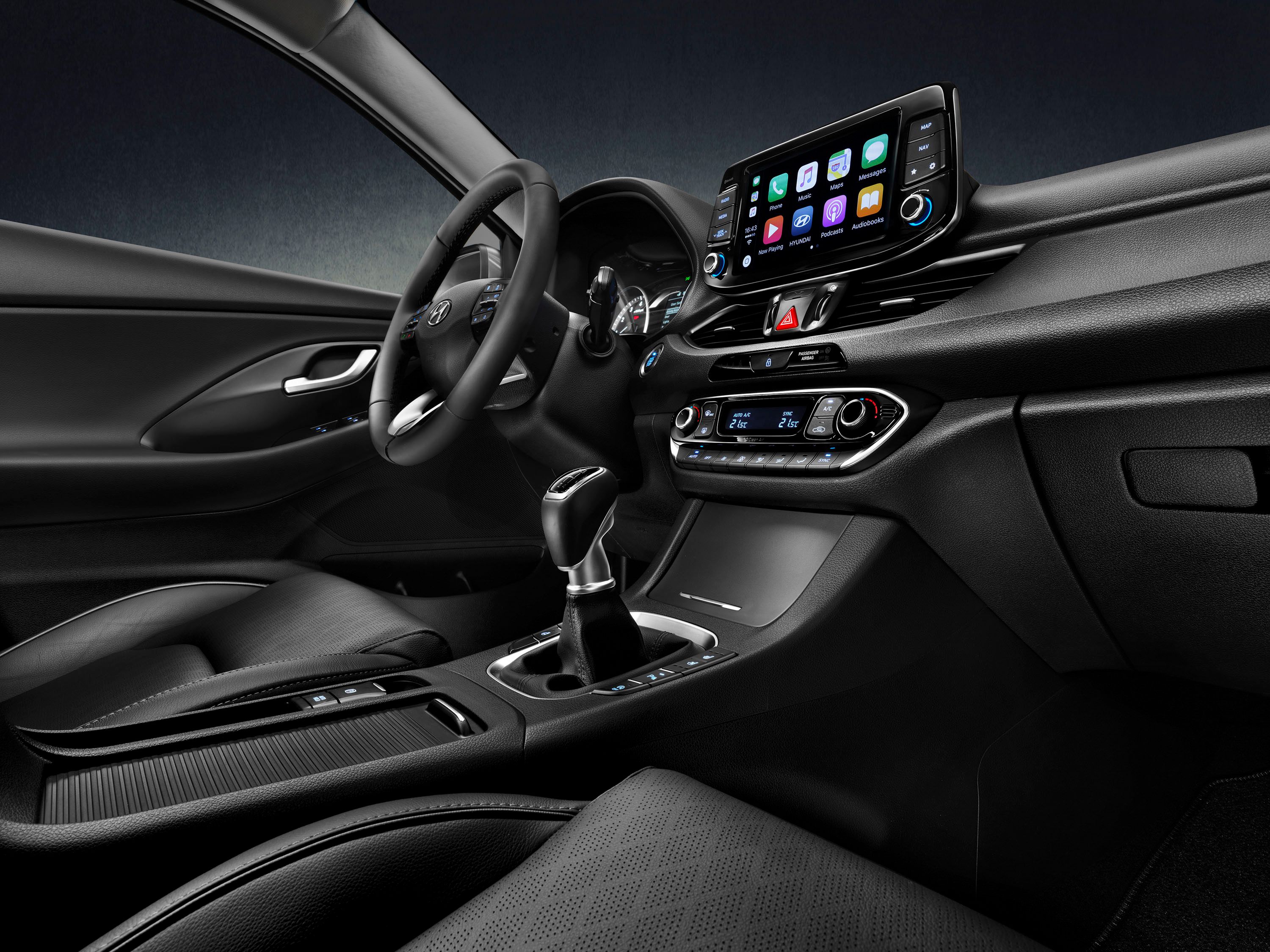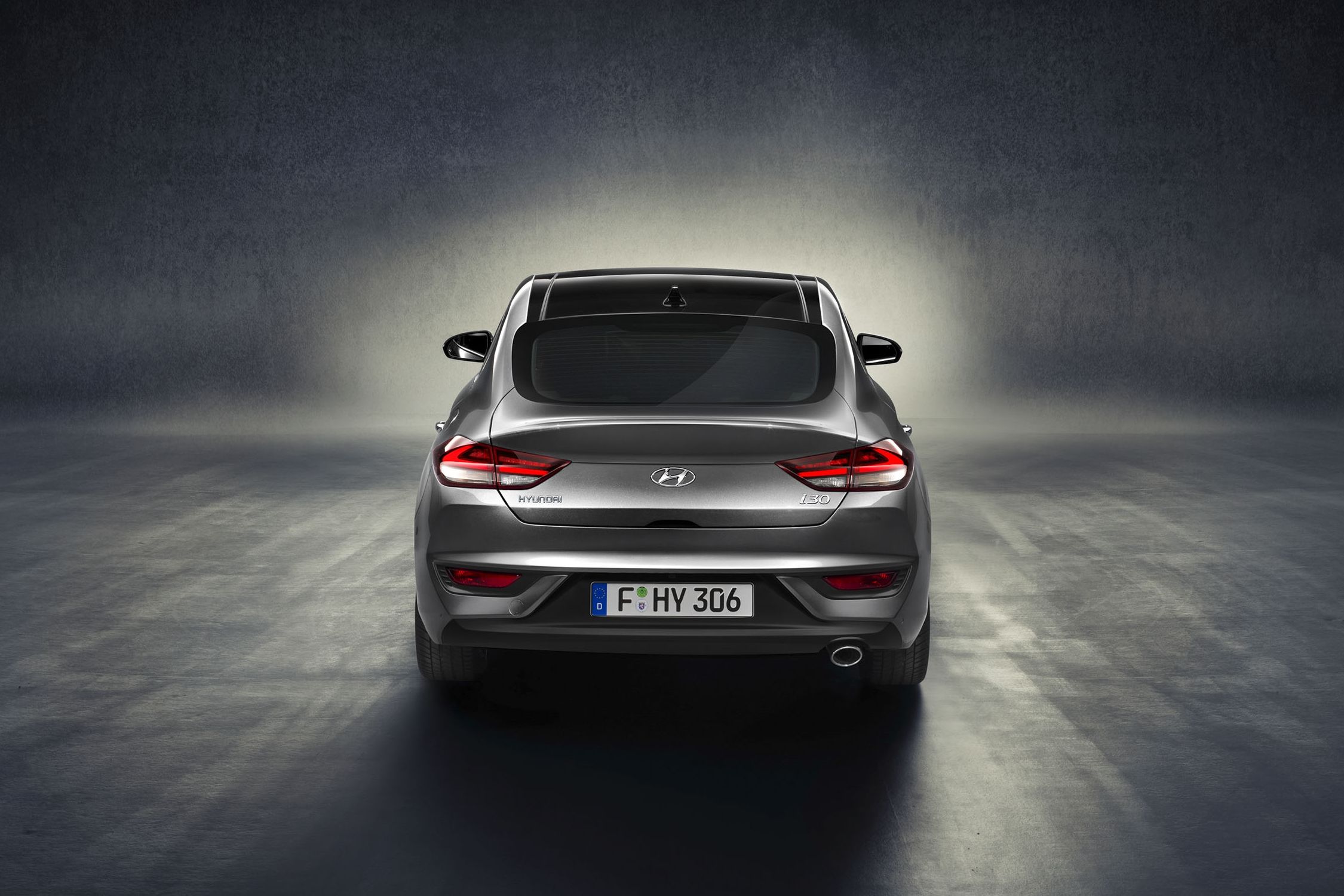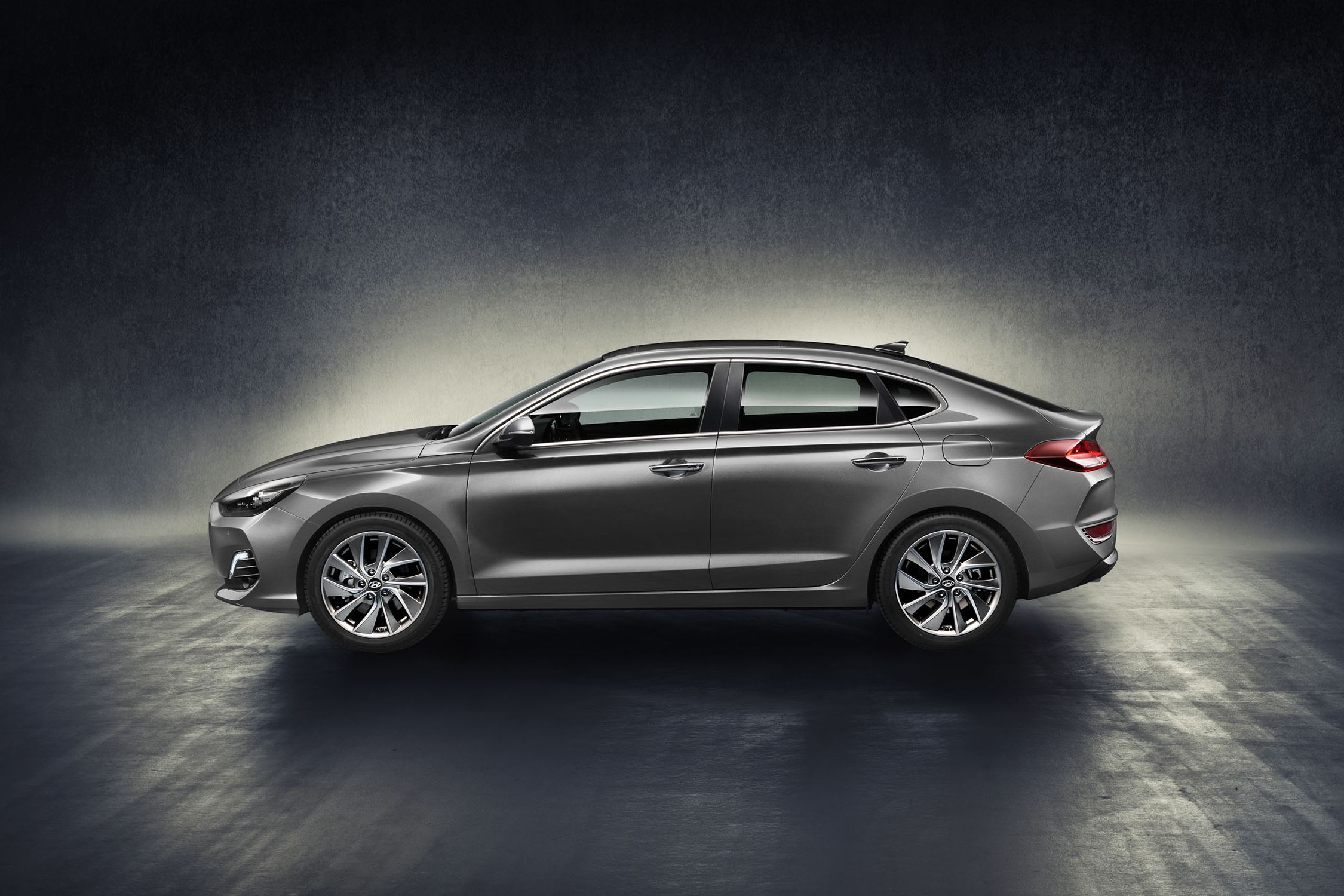The third-generation Hyundai i30 arrived in 2016 as a significant makeover of the previous model. Redesigned inside and out, the hatchback gained Hyundai's latest design language, as well as a host of new features and tech that moved the i30 a bit closer to the premium market. As usual, the hatchback also received a longer, wagon version, but for the very first time since its introduction in 2007, it also got a higher performance variant developed by the company's N division. Come 2017 and the i30 also gained its first-ever sedan version.
Dubbed i30 Fastback, it's not a traditional four-door sedan, but it's the closest thing to a three-box design to wear the "i30" badge. The Fastback rounds off the i30's largest vehicle lineup in history and enables the nameplate to better compete with the sedan version of the Ford Focus, as well as extremely popular four-door compacts such as the Toyota Corolla and the Honda Civic. Find out how it compared to some of the world's best-selling vehicles in the review below.
Continue reading to learn more about the Hyundai i30 Fastback.
2018 Hyundai i30 Fastback
- Make: Array
- Model: 2018 Hyundai i30 Fastback
- Horsepower: 118
- Torque: 125
- Transmission: six-speed manual
- [do not use] Vehicle Model: Array
Exterior
The i30 was redesigned for the 2017 model year and needless to say, Hyundai did a great job and turned the hatchback into a pretty, sporty-looking vehicle. Fortunately, the i30 Fastback is of the same variety, sharing many of the company's recent styling cues with the five-door model. But while the two share about the same design, the Fastback sports quite a few unique features.
The resemblance is more than obvious up front, where we can see the same headlamps, grille, and engine hood as on the hatchback. However, Hyundai gives the Fastback a unique twist with a redesigned bumper. While the hatchback comes with thin, vertical side vents and a slim opening under the grille, the fastback version uses wider, slanted side openings. Combined with the slightly larger splitter, these new details give the car a more aggressive appearance. While not as a menacing as the i30 N, the Fastback is definitely sportier than the hatch.
Moving onto the sides we can see more changes compared to the five-door. While the two cars are seemingly identical from the nose to the B-pillars, things take a different shape toward the rear. The first thing that catches the eye is the new sloping roof. Shaped like a coupe, the new roof also brings redesigned rear and quarter windows. In addition, the Fastback features beefed-up shoulders and a revised beltline that no longer runs into the taillights. Instead, it comes to a halt just behind the rear doors, with a secondary, smoother line taking over from the rear door handles to the taillights. This seemingly small detail changes the car's appearance considerably and gives the Fastback a unique look.
When viewed from the back, the i30 Fastack is an entirely different car. Gone are the hatchback-style tailgate and roof spoiler, replaced by a much sleeker trunk and a rather large and aggressively arched spoiler. The taillights have also been redesigned, especially toward the fenders, where they are longer. The fascia is quite sporty thanks to the arched spoiler, but the high bumper adds to that effect too. While the license plate is still in the apron, it is now flanked by red brake lights, which are positioned higher on the hatchback. These lights also feature black trim and a trapezoidal shape, both adding to the car's significantly sportier look. Much like the front end, the rear bridges the gap between the standard i30 and the i30 N.
Overall, the i30 Fastback looks and feels balanced. While not as sleek as a full-fledged coupe, it's not as boring as the hatchback either. It's a great compromise if you want a compact but you don't like the hatchback body style or the hearse-like appearance of a wagon.
Hyundai i30 Fastback vs. Hyundai i30 Hatchback
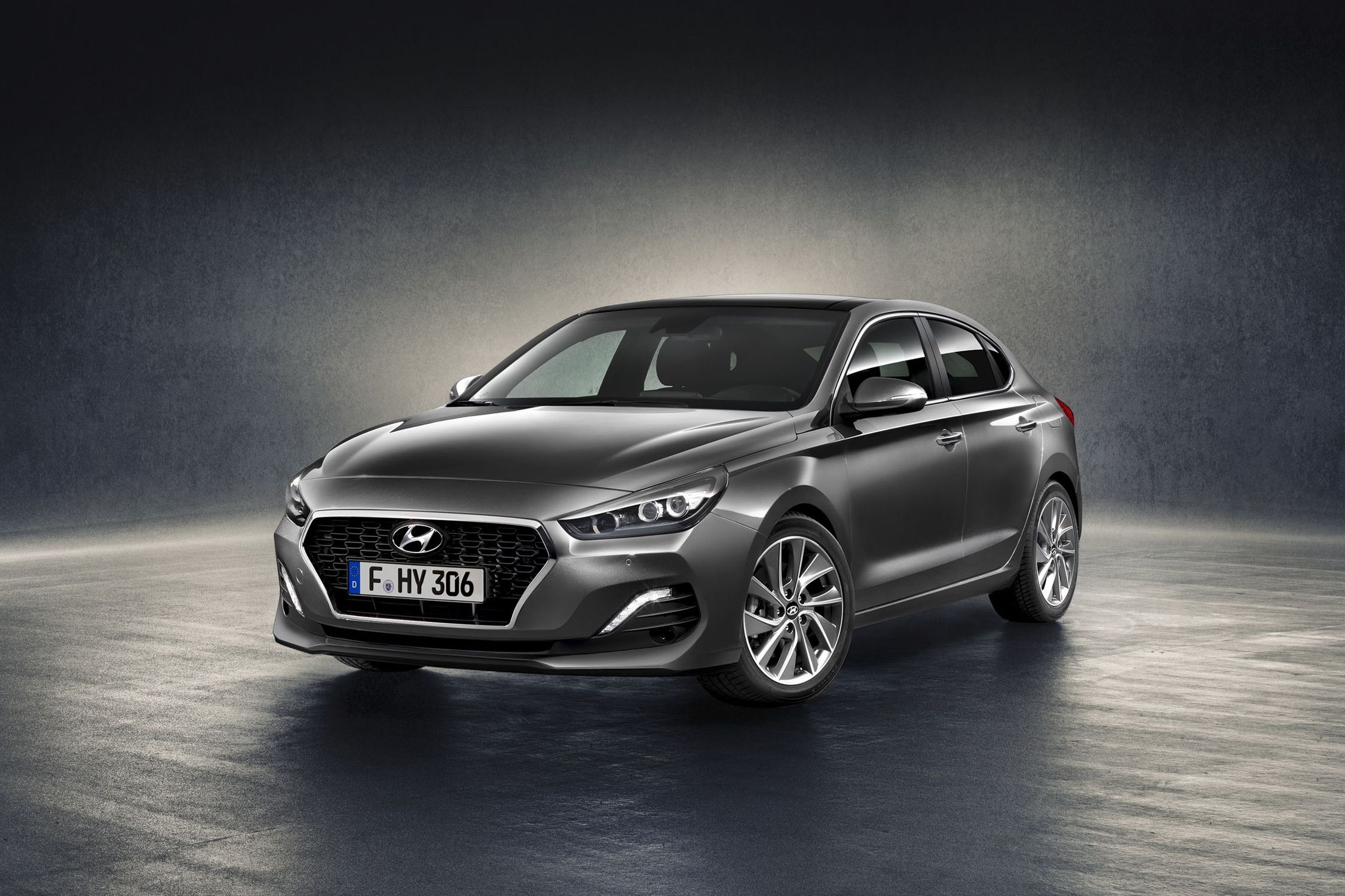
|
|
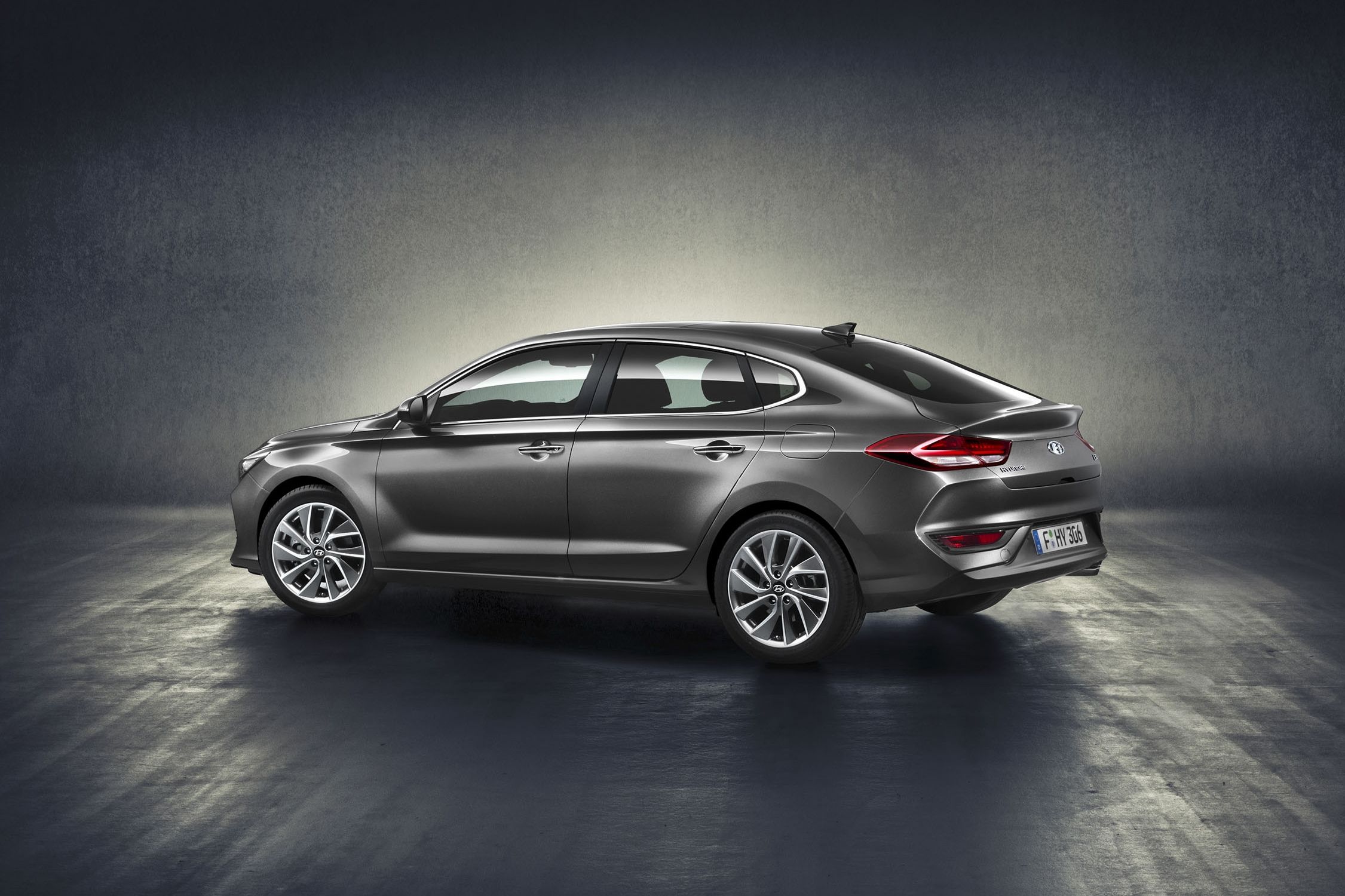
|
Hyundai i30 Fastback vs. Hyundai i30 N
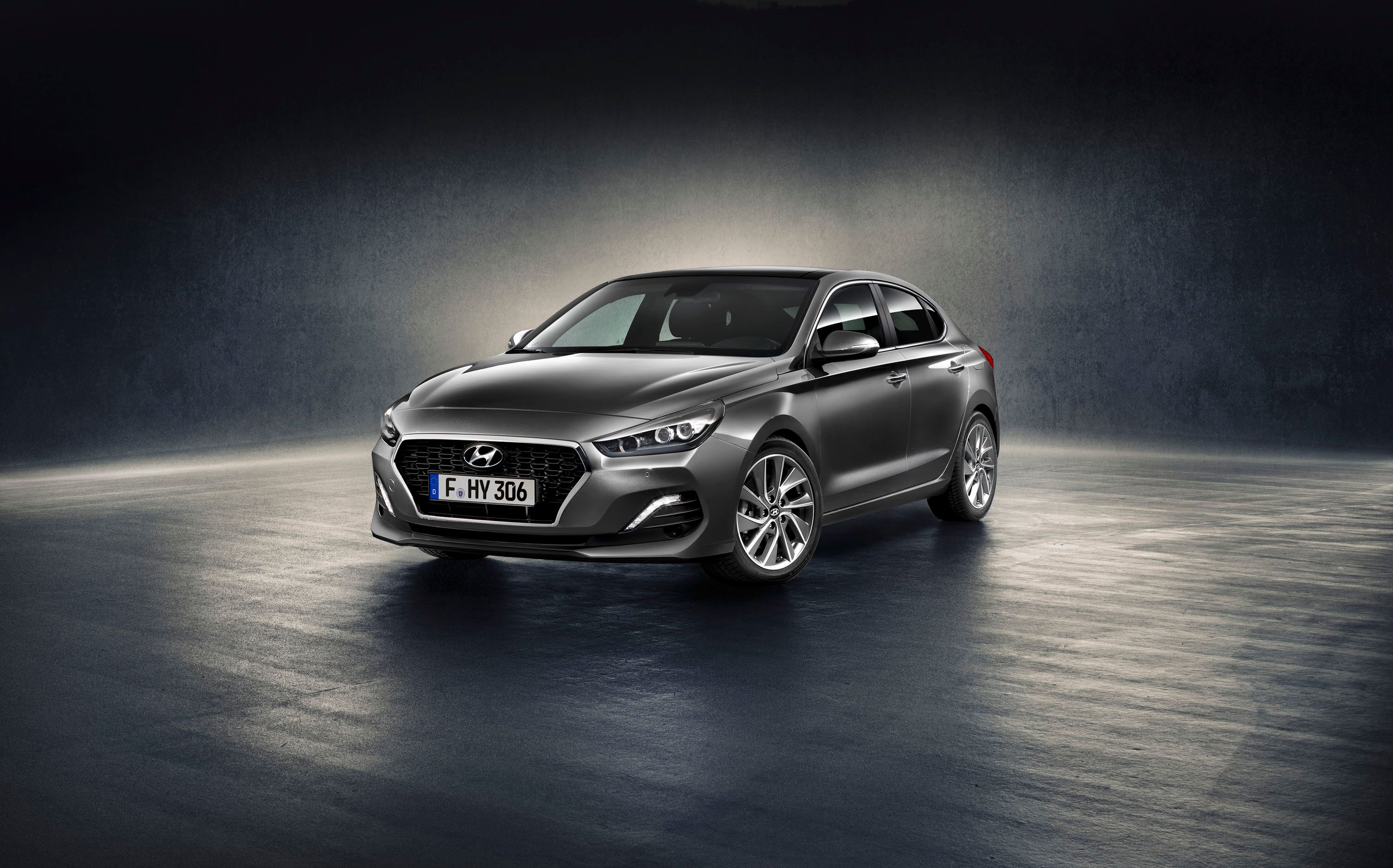
|
Interior
Not surprisingly, the interior of the fastback model is identical to the hatchback. But this is good news, because the new i30 is modern and more upscale on the inside.
The dashboard now features a horizontal oriented layout that makes the cabin feel spacious, while the materials have better quality. The center stack is clean and features a "floating" touchscreen that brings together all navigation, media and connectivity features and gives the car a high-tech look. However, it's worth noting that the eight-inch touchscreen is optional.
It comes with a new-generation navigation system, Apple CarPlay, and Android Auto, among other features you find in most modern cars. The navigation system also includes a free seven-year subscription to LIVE Services, offering updated information about weather, traffic, speed cameras and online searches for points of interest in real time. A wireless charging system for smartphones with the Qi standard is available.
The fastback also benefits from a heated, three-spoke steering wheel, and a new instrument cluster with white dials and blue accents. The driver’s seat has a memory function as standard, but leather is optional. Three upholstery color options are available -- Oceanids Black with either cloth or leather seats, Slate Gray/Oceanids Black also with either cloth or leather, but with diamond pattern, and Merlot Red. The latter is unique to this model, replacing the all-leather Indigo Blue/Oceanids Black option in the hatchback.
As far as tech goes, the Fastback is equipped with a dynamic rear-view camera, Bluetooth, USB, wireless charging pad as standard. Options include.
There are no details as to how much space rear-seat customers will have in addition to the hatchback, but legroom and shoulder room figures shouldn't change much. However, headroom might suffer a bit due to the sloping roof. Also, expect the Fastback to have less luggage room in the trunk.
Drivetrain
Under the hood, the Fastback borrows its drivetrains from the hatchback model, but you won't get as many options. While the i30 range begins with a naturally aspirated, 1.4-liter four-cylinder rated at 100 PS (99 horsepower), the Fastback misses the base powerplant. Specifically, the Fastback is only available with the turbocharged engine, starting with the 1.0-liter T-GDI. Good for 120 PS and 170 Nm of torque (118 horsepower and 125 pound-feet), it mates to the company's six-speed manual gearbox.
Next up is the turbo 1.4-liter four-pot, rated at a solid 140 PS and 242 Nm of twist (138 horsepower and 178 pound-feet). Also paired with the six-speed manual as standard, this mill is available with a seven-speed dual-clutch automatic too. Some 14 kg (31 pounds) lighter than the naturally aspirated 1.4-liter, it features a high-pressure single-scroll turbocharger integrated in the exhaust manifold for improved throttle response time and low-end torque. The new design injects fuel directly inside the cylinder, improving combustion rates for better power and fuel efficiency.
Later on, the i30 Fastback will also get a 1.6-liter four-cylinder diesel. Having already made its debut in the hatchback, the oil burner will be offered in two flavors. There will be a base version with 110 PS (108 horsepower) and a "high power" variant with 136 PS (134 horsepower). The standard i30 also gets a base 95-PS (94-horsepower) model, but it seems that this version won't be offered with the Fastback model. Both the six-speed manual and the seven-speed automatic will be available with the diesel.
But, while the engines are by no means special compared to what you get in the hatchback, the chassis setup is. Hyundai lowered it by five mm (0.2 inches) and the stiffness of the suspension has been increased by 15 percent. This upgrade provides a more dynamic and more agile driving experience while still maintaining a high level of comfort. Thanks to the lowered roof and chassis, the i30 Fastback is also 30 mm (1.18 inches) lower than the five-door.
Safety
Hyundai claims that the i30 Fastback comes with a class-leading safety package, and looking over the list, it might be right. Features include Autonomous Emergency Braking that operates in three stages using camera sensors and Driver Attention Alert, a system that monitors driving patterns in order to detect reckless or fatigued driving and prevent potential accidents. There's also Advanced Smart Cruise Control that keeps a constant speed and distance from the vehicle in front by automatically accelerating and braking up to 180 km/h (112 mph) and Blind Spot Detector for accurate rear corner monitoring.
The standard safety package also includes Rear-Cross Traffic Alert, Lane Keeping Assist System, and Speed Limit Information Function. The latter recognizes road speed signs and displays the speed limit in real time on both the navigation screen and the instrument cluster. Finally, there's a High Beam Assist function that detects both oncoming vehicles and cars ahead in the same lane at night and changes to low-beam lights, reducing blinding effects on other drivers.
Prices
Pricing information for the i30 Fastback is not yet available, but expect it to be similar to the hatchback. However, given that the Fastback doesn't get the base gasoline engine, the entry-level model should be a tad more expensive than the regular i30, which retails from £16,995 in the U.K. There's no word on whether the i30 Fastback will come to the U.S., but don't get your hopes up.
Competition
Toyota Corolla
The i30 Fastback is going against tought competition and its main rival in Europe is the Toyota Corolla. Although not available in all European markets, the Corolla is extremely popular in both central and western Europe due to its affordable sticker, fuel efficient drivetrains, and low maintenance costs. The Japanese compact was upgraded in 2016, gaining sleeker LED headlamps, a thinner upper grille, and LED clusters for the taillights. The engine lineup is as diverse as they get. Although the 1.8-liter four-banger isn't available in Europe, customers to get to choose between three different units. First up is the 1.33-liter four-cylinder, which cranks out 98 horsepower and 94 pound-feet of torque. Should you need more oomph, you can go with the 1.6-liter four-pot, rated at 130 horses and 118 pound-feet of twist. Finally, there's the 1.4-liter diesel that comes with 89 horsepower and a solid 151 pound-feet on tap. The Corolla isn't available in the U.K., but German pricing starts from €21,220, which converts to around £18,830. In the U.S., the current Corolla retails from $18,500.
Read our full review of the Toyota Corolla.
Ford Focus Sedan
The Ford Focus is equally popular and also comes in a sedan body style. However, much like the Corolla, the Focus Sedan isn't available in certain markets. Already three years old as of 2017, the Focus doesn't feel as modern as the i30 Fastback, but it's not dated either. The interior also has plenty of features to be considered modern, even though it lacks some of the fancier features found in the Hyundai. Drivetrain-wise, the European model can be had with one of three engines. The base gasoline model is the familiar 1.6-liter four-cylinder with 85 PS (84 horsepower). More juice comes from the turbocharged, 1.0-liter EcoBoost, which cranks out a stout 100 PS (99 horsepower). If you're into oil burners, Ford has you covered with the 1.5-liter TDCi, rated at 95 PS (94 horsepower). German pricing for the Focus Sedan starts from €18,700, which makes it significantly more affordable than the Toyota Corolla. In the U.S., it retails from $16,775.
Read our full review of the Ford Focus Sedan.
Conclusion
While the previous-generation i30 received a lot of praise for its design, low running cost, and solid drivetrains, it was still considered a rather mundane option to the Toyota Corolla, Ford Focus, and Honda Civic. This changed with the latest i30, which became not only one of the better looking propositions on the market, but also arrived with an impressive tech package and a spacious interior. Hyundai was quick to add a wagon version and, for the very first time, a performance-oriented N variant, which further enhanced the nameplate's appeal. The Fastback is a brand-new version of the i30, giving it access to the compact sedan market. Granted, it's not a full-fledged sedan and it may not appeal to all four-door enthusiasts, but it's the first three-box i30 and sports a somewhat exotic design compared to its rivals, mainly due to the fastback roof. If you're into a compact that's different, the i30 Fastback is definitely the way to go.

